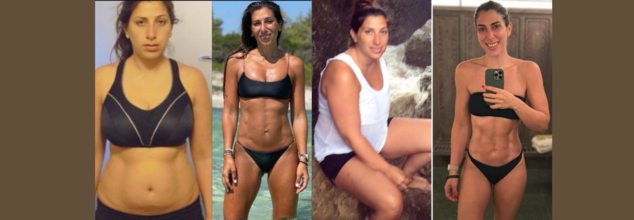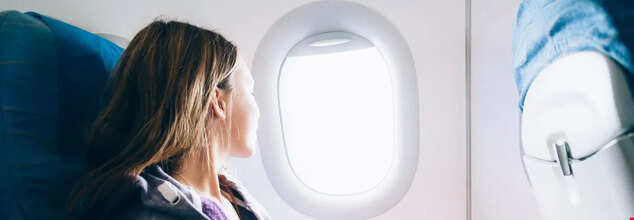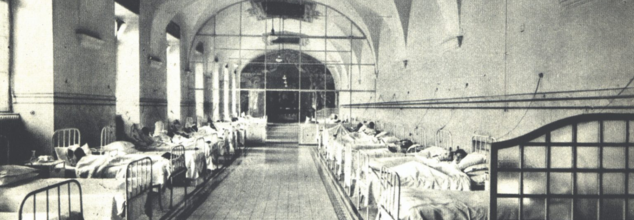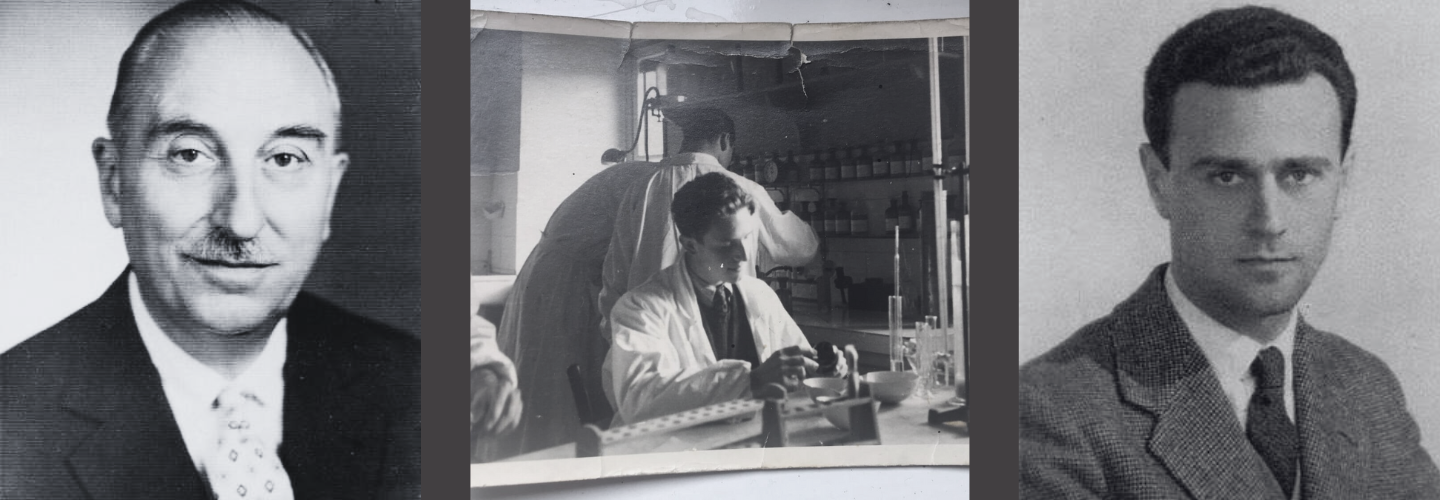- Health Conditions A-Z
- Health & Wellness
- Nutrition
- Fitness
- Health News
- Ayurveda
- Videos
- Medicine A-Z
- Parenting
- Web Stories
Mum Of 3 Lost 30kg In 6 Months- Her Secret? A Simple 10-Minute Trick

Image Credits: Instagram
Weight loss can seem daunting, particularly when you're balancing family, work, and the pressures of everyday life. But what if the secret to change wasn't a radical diet or grueling gym workouts? Get to know Rachael Sacerdoti, a 44-year-old mother of three who transformed her life—not with a personal trainer or strict meal plans, but with tiny, achievable changes that anyone can implement. Within six months, she lost 30kg, beginning with 10-minute walks and bedroom workouts at home. Her experience is evidence that it doesn't have to cost you everything you enjoy to take care of your health—it's all about balance, consistency, and finding a routine that suits you.
Nine months post-baby birth of her youngest daughter, Rachael had reached 90kg. Everyday tasks were challenging, and she would often find herself with swelling and redness in her feet after a walk. Worse than the physical challenges, however, was that she had lost her sense of self, confessing, "I didn't know who I was."
Even after repeated efforts to shed weight in the past, Rachael was restless, wanting to see results at once and quitting too early. But as she entered her 40s, she understood the process would take a long time—calling for persistence and patience.
Rachael's journey started with a 20-minute bedroom exercise and 10-minute walks around her neighborhood. Rather than completely transforming her lifestyle in one night, she gradually changed her diet and daily routine. She began losing weight at a consistent rate of 1kg per week, eventually achieving a total weight loss of 30kg within six months.
"I began in my bedroom, my sanctuary, and the progress was very slow, but I could see a difference in the way I moved and ate," Rachael explained. "I fell in love with the routine and healthy eating."
In addition to the weight loss, she felt a total transformation of confidence and outlook. "My confidence returned, I gained a true sense of myself and what I wanted out of my life."
One of the reasons Rachael succeeded was that she could stick to a routine. She spent less than an hour every morning on her health and achieved amazing results. Unlike most methods that entail gym memberships and diet programs, her approach was easy and feasible.
"I came to understand that spending an hour on myself each morning totally changed my life," she said. "It was unbelievable."
Rachael's weight loss transformation not only transformed her life but also positively influenced her family. She observed that the eating habits of her children were similar to hers—giving preference to sugar and processed foods. When she transitioned to a healthier, balanced diet, her family followed automatically.
Instead of strictly monitoring her children’s intake, she instilled an understanding of nutrition and balance. "I want my kids to know about nutrition and for them to realize when they’ve had too many lollies or chips," she explained. "They’re allowed to eat everything in moderation—I’d never dream of taking chocolates away from them."
Rachael’s Sustainable Diet Swaps
Instead of diets, Rachael used straightforward food exchanges to maximize her nutrition levels without missing anything. She preferred whole foods to keep her filled and fueled throughout the day.
Carbs: Replaced white bread, rice, and potatoes with quinoa, brown rice, sweet potatoes, and wholemeal bread.
Pasta: Had chickpea and lentil-based pasta rather than wheat flour products.
Protein: Substituted red meat with lean proteins such as chicken, turkey, fish, and plant protein such as tofu and cottage cheese.
Dairy: Greek yogurt was a standard snack and breakfast item.
Vegetables: Added leafy greens to each meal to remain full and content.
"I didn't want to feel like I was dieting or that I had to eat little pieces of food," she said. "I just wanted to feel good and eat well."
From Personal Transformation to Coaching Others
As Rachael reached her fitness achievement by early 2020, her transformation amazed people around her. People and family members were keen to know how she had attained such an incredible transformation and asked for advice from her.
When the COVID-19 pandemic occurred and gyms closed, Rachael decided to assist others on their fitness journeys from home. What began as a group text with six friends eventually grew organically through word of mouth. By the time she had 20 clients, she had crafted a formal business plan and began her wellness program, It's So Simple.
"My friends were concerned about the gyms closing and they didn't know how they'd keep up with their routine," she said. "That's when they begged me to assist them and teach them how I transformed my figure."
Rachael now has more than 17,000 Instagram followers and still posts about her knowledge of fitness, nutrition, and accountability.
A Typical Day on Rachael's Plate
Rachael's nutrition is kept in balance and within reach at all times. Here's a snapshot of how she eats during the course of a day:
Breakfast (10 AM): Protein oats topped with cottage cheese and peanut butter.
Lunch (12:30 PM): Smoked salmon on a bagel with cream cheese or egg salad.
Snack (4 PM): Fruit and Greek yogurt.
Dinner (7 PM): Chicken breast with brown rice and vegetables.
Why Should You Must Apply Sunscreen Inside A Plane?

Credit: Canva
I love everything about travelling—the journey, the suitcase, and the sense of thrill. But one thing that really leaves me struggling is the condition of my skin after a long flight. The low air pressure and dehydrating air in the plane suck out every ounce of moisture from my skin. However, I recently discovered that what is even more dangerous is its exposure to harmful ultraviolet (UV) rays from the sun. What a lot of people don't know is that these harmful UV rays affect your skin even more when you are up there, at a higher altitude.
Therefore, health experts have warned that you should always wear sunscreen while onboard a plane. Moreover, wearing a relevant Sun Protection Factor (SPF) is especially important if you get a window seat rather than an aisle seat. Elizabeth Japal, from The Derma Lab, emphasises that many people do not realise that UV exposure actually increases as we move up in altitude, and aeroplane windows do not block all the UVA rays, which are the primary cause of premature skin ageing. "You’re essentially sitting next to a magnified sun bed, especially in the window seat," she told a leading media house.
This, combined with the low humidity of the cabin, makes your skin vulnerable to dehydration, dullness, and damage. "It's not just about how you look stepping off the plane—regular exposure to this kind of environment can really take a toll on skin health over time." The experts have encouraged people to prep their skin before travelling, whether you are flying short or long-haul. And yes, you still need to wear SPF even if it's cloudy and grey.
Urging people to prep before they step foot in the airport, Elizabeth says that this applies to everyone, whether you are flying short or long-haul. And yes, you still need to wear SPF even if it's cloudy and grey.
So, What Should We Do?
Dr Japal and other dermatologists suggest that you must clean, hyderate and apply a proper sunscreen before catching that flight. Here are 4 steps that you must follow:
1. Cleanse Properly Before Flying
In her number one rule, Dr Japal urges people to cleanse before flying. “Starting with clean skin is essential. Your face will already be exposed to the drying effects of cabin air—leftover makeup, SPF, or pollution will only clog pores and contribute to inflammation,' she told a leading media website.
2. Hydrate Your Skin
Both before and during the flight, you should spritz some mist on your face for hydration. The recycled air on planes can sap your skin of moisture within minutes. Doing this throughout the flight helps prevent dehydration and delivers an instant glow.
3. Hydrating Serum
Serums are your skin's drink of water. Layering a serum underneath your moisturiser maximises hydration while boosting antioxidant protection.
What Was The Pseudo-Tuberculosis Like 'Syndrome K' Saved Thousand Lives During World War II?

Fatebenefratelli Hospital's "Syndrome K" ward, 1944. (SyndromeK.com)
Have you ever heard of a disease so cruel that I haunts the oppressors? Maybe not. But such a disease, or a fake on exists.
Fear of disease has long haunted humanity. The reasons are many, form devastation of the Black Plague to the slow unraveling of rabies' mysteries, contagious illness offers with it dread, suspicion and isolation.
However, during the World War II, a trio of Italian doctors used this universal fear to not harm, but actually to protect. It was in 1943, when the trip created a fictional ailment known as Syndrome K. This was a fake disease invented that saved Jews from Nazi persecution.
The Invention of Syndrome K

The disease was entirely fabricated by three Italian physicians: Dr Adriano Ossicini, Dr. Giovanni Borromeo, and Dr. Vittorio Emanuele Sacerdoti.
They all worked at the Fatebenefratelli Hospital, a Catholic facility located on Tiber Island in the heart of Rome, these men developed Syndrome K as a disguise for Jewish patients fleeing Nazi capture.
The ruse began after the fall of Mussolini in 1943, when German forces occupied Italy. Jews in Rome, especially those who lived in Jewish ghetto faced arrest and deportation and were aware that Nazis were terrified of infectious diseases, especially tuberculosis. The doctors thus devised Syndrome K, which they described as a deadly, highly contagious illness and classified Jewish patients as infected. The doctors placed them in quarantine wards that Nazi soldiers would be afraid to enter.
The name Syndrome K was deliberately ambiguous and misleading. The "K" was thought to hint at Koch's disease, which is another name for tuberculosis. Ossicini later admitted that the letter also referenced high-ranking Nazis: Albert Kesselring and Herbert Kappler, who were leading the persecution of Roman Jews.
Misleading Symptoms Specifically Designed To Scare
For the ruse to be effective, Syndrome K had to sound convincingly terrifying. The doctors described it as a neurological disorder with symptoms ranging from violent coughing and seizures to paralysis and eventual death. The fictional disease was said to be extremely contagious, untreatable, and fatal.
Patients were instructed to feign symptoms if Nazis entered the hospital—loud, phlegmy coughs, labored breathing, and an appearance of extreme frailty. The illusion was so effective that even when German officers came to search the hospital, they quickly turned away after hearing the hacking coughs and being warned of a “mysterious and incurable” illness.
A Life-saving Deception
The success of the Syndrome K ruse depended on complete secrecy and cooperation. Staff at the hospital were informed of the plan and briefed on how to maintain the illusion. Jewish patients in hiding knew to play their roles. When Nazis arrived, the hospital’s quarantine ward, full of the “infected,” deterred even the most determined soldiers.
While one Nazi search did tragically result in the discovery and deportation of five Jewish refugees, the overall plan was remarkably successful. Historians estimate that around 100 Jewish individuals were saved through the invention and implementation of Syndrome K.
To further the deception, the hospital issued fake death certificates for refugees who were later smuggled out of the country or relocated to safer areas. Each certificate listed Syndrome K as the cause of death, reinforcing the myth of the disease.
All three doctors survived the war, and their courageous deceit has since been recognized around the world. In 2016, Fatebenefratelli Hospital was honored as a “House of Life” by the Raoul Wallenberg Foundation, recognizing sites that sheltered Jews during the Holocaust. Dr. Giovanni Borromeo was also named Righteous Among the Nations by Yad Vashem, Israel’s Holocaust memorial authority.
Alcohol-Related Cancer Deaths Double in U.S. Over 30 Years

Credits: Canva
A new study which is yet to be published in a peer-reviewed journal, which will be presented at the American Society of Clinical Oncology's annual meeting next week found that cancer deaths related to alcohol use in the United States have more than doubled in the last 30 years.
The number rose from under 12,000 in 1990 to over 23,000 in 2021. Men and people aged 55 and older are the most affected.
Alcohol And Cancer Risk
The research team analyzed national death data from 1990 to 2021 to understand alcohol's role in cancer mortality. As per Dr Chinmay Jani, who is the lead author of the study and a clinical fellow in haematology and oncology at the Sylvester Comprehensive Cancer Center, "We already know other risk factors, such as tobacco, for cancer. However, it is very important to know that alcohol is also a risk factor and can be a carcinogen in many different cancers,” as reported in ABC News.
Dr. Jani emphasized that even small amounts of alcohol can pose a risk. “It doesn’t necessarily mean that you are drinking every day,” he added, highlighting the importance of understanding the cumulative effects of alcohol over time.
Seven Types Of Cancers Were Examined
The researchers focused on seven types of cancer linked to alcohol use: breast, liver, colorectal, throat, voice box, mouth, and esophageal. While alcohol does not cause every case of these cancers, it is a known contributing factor in a significant portion of them.
In 1991, alcohol-related cancer deaths accounted for 2.5% of all cancer deaths in men and 1.46% in women. By 2021, these figures rose to 4.2% in men and 1.85% in women. The increase in men was particularly striking — a 56% rise in alcohol-related cancer deaths — while for women, the increase was nearly 8%, according to NBC News.
Cancer Affecting Adults And Men Disproportionately
Dr Jani also noted a gender gap in the findings. He said, “It was not surprising that it was higher in men, but it was certainly surprising how much higher it was in men versus women.”
As per the data, cancer deaths related to alcohol were more common in men and individuals aged 55 and over. In men, within this age group, the death rose by more than 1% every year from 2001 to 2021.
“The carcinogenic effect probably isn’t affecting you right away in your younger age,” Dr. Jani explained. “But as you continue to drink as you age, this carcinogen has an accumulative effect on the body.”
Most Deadly Cancer
Among the seven cancers linked to alcohol, liver, colorectal, and esophageal cancers were the deadliest overall in 2021. For men, liver cancer was the leading cause of alcohol-related cancer deaths. For women, breast cancer ranked highest.
The findings underscore the growing public health concern around alcohol consumption and the urgent need for greater awareness about its long-term health effects.
© 2024 Bennett, Coleman & Company Limited

